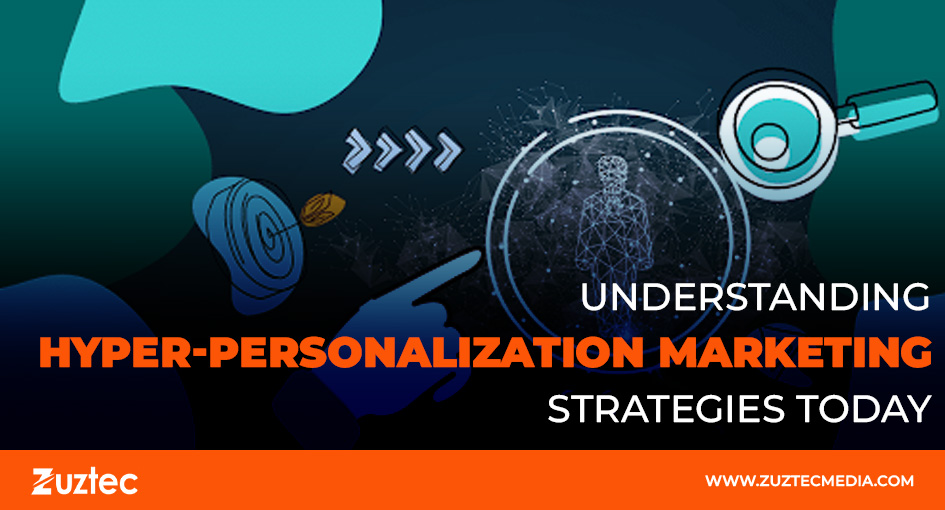
Understanding Hyper-Personalization Marketing Strategies Today
In a world saturated with digital content and ads, standing out requires more than just targeting the right audience—it demands speaking directly to the individual. This is where hyper-personalization marketing steps in. Unlike traditional marketing methods that segment users into general categories, hyper-personalization uses data, artificial intelligence, and real-time insights to deliver content tailored to each person’s behaviors, preferences, and needs.
Customers of today want brands to be aware of their identity. Personalization is now required for everything from suggesting the next product to providing timely discounts. By utilizing cutting-edge technology like machine learning and predictive analytics, this kind of marketing goes beyond this. These tools assist companies in providing experiences that are immediate, relevant, and human.
Whether it’s through personalized emails, dynamic websites, or product suggestions based on real-time behavior, this approach is proving to increase engagement, loyalty, and conversions. Brands using hyper-personalization are not just reacting to consumer actions—they’re anticipating them. This proactive strategy builds a deeper emotional connection between brands and customers, making them feel seen and valued.
With rising customer expectations, the demand for deeply individualized marketing will only grow. Investing in this strategy today is more than just a trend; it’s a smart, forward-thinking move that positions businesses to meet the future of customer experience head-on.
What Is Hyper-Personalization Marketing
Using real-time data, automation, and artificial intelligence to customize experiences and content for each individual is known as hyper-personalized marketing. Unlike basic personalization that might insert a user’s name in an email, hyper-personalization digs deeper by analyzing browsing history, purchase behavior, device usage, and other personal data points.
This level of detail allows marketers to create highly relevant experiences across multiple touchpoints. For example, a user browsing winter jackets might later see personalized ads for jackets in their size, price range, and preferred style—all based on real-time interactions.
Brands must collect and process user data securely while ensuring compliance with privacy laws. With the right systems in place, however, hyper-personalization can transform the way a brand communicates, boosting both customer satisfaction and revenue.
Key Technologies Powering Personalized Campaigns
Artificial intelligence plays a crucial role by helping businesses process vast amounts of data and uncover patterns that aren’t visible to the human eye. Predictive analytics, for instance, can determine what a user might want before they even ask for it.
Another vital tool is machine learning, which enables systems to learn from user behavior and improve their recommendations over time. Dynamic content platforms also play a role, enabling websites and apps to change in real-time based on who is visiting.
In the midbody of a campaign, tools like customer data platforms (CDPs) help consolidate information from various channels, giving marketers a full picture of each user. This consolidated view ensures that every message, offer, or recommendation aligns with the individual’s unique journey, not just their demographic group.
Benefits And Challenges Of Hyper-Personalization
The benefits of hyper-personalization marketing are significant. Customers who receive personalized experiences are more likely to engage with brands, make repeat purchases, and share their positive experiences. This leads to increased customer lifetime value and stronger brand loyalty.
It also helps businesses make better decisions. By understanding what customers want and when they want it, companies can optimize their inventory, product development, and even pricing strategies. Campaign performance improves as relevance increases, and brands spend less money reaching people who are unlikely to convert.
However, there are challenges. Managing large amounts of personal data requires strong security measures and adherence to privacy regulations such as GDPR or CCPA. Building the necessary infrastructure—like advanced analytics platforms and integration tools—also demands time and investment.
Still, the long-term returns make it worthwhile. Companies that overcome these hurdles often gain a major competitive advantage, as they’re better equipped to meet evolving consumer expectations.
The Future Of Marketing Is Deeply Personalized
As technology evolves and consumer behavior continues to shift, hyper-personalized marketing will become the new standard. Businesses that adopt this approach early are more likely to lead in customer engagement, loyalty, and revenue. With AI and machine learning advancing rapidly, the possibilities for even more nuanced and predictive personalization are expanding.
In the conclusion of every modern marketing strategy, businesses must evaluate how well they’re truly connecting with customers. Hyper-personalization marketing is not just a buzzword; it’s a powerful tool for creating meaningful experiences in a world full of digital noise. Embracing it today prepares brands to thrive in the hyper-connected world of tomorrow.

